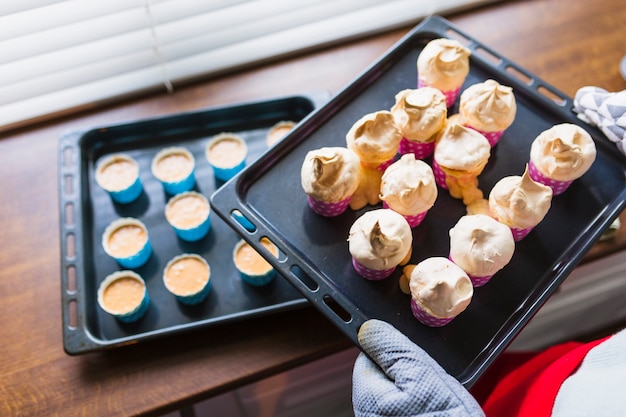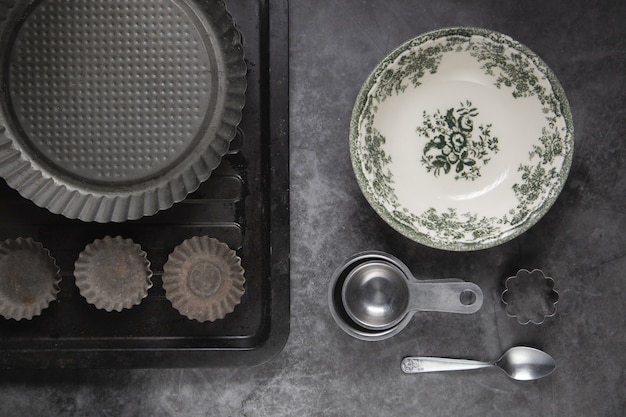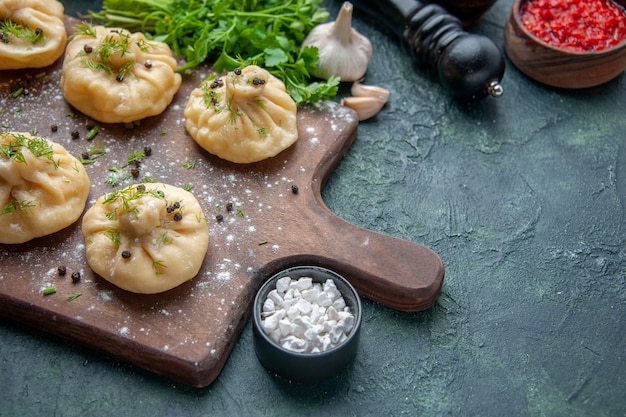Let’s be honest, scallops are a bit intimidating, right? They're so delicate, so expensive, and so darn delicious that it feels like a high-stakes culinary challenge. I've been there, standing before a pile of beautiful scallops, wondering if I'll create a culinary masterpiece or a chewy, rubbery disaster. But over the years, through a mix of trial and error (and a few burnt batches I’d rather not talk about), I've finally figured out the secrets to cooking scallops that are absolutely divine. And guess what? It’s easier than you think!
This isn’t just another recipe. It’s a journey, my friends. We’re going to dive into the details, from choosing the right scallops and getting them perfectly prepped to mastering the art of searing and adding those delicious finishing touches. By the end, you'll be a scallop-cooking pro, confident enough to wow your friends and family with this elegant and crowd-pleasing dish. Ready?
(Part 1) Choosing Your Scallops: The Foundation of Success

Just like a house built on a shaky foundation, scallops cooked with the wrong ingredients will never reach their full potential. So, let's start with the most important element – choosing those perfect scallops!
1. Freshness is Key:
Freshness is everything when it comes to scallops. You want them to taste like the ocean, not like they've been sitting in the back of your fridge for a week. I always visit a reputable fishmonger or a high-quality grocery store with a great seafood section. Look for scallops that smell fresh – a hint of the sea, but not fishy. They should also be plump and firm, not soft or mushy.
2. Size Matters:
Scallops come in a variety of sizes, often labelled with a size or count per pound. For example, "U10" means there are 10 scallops per pound. My go-to choice is the medium-sized ones, like "U8" or "U10." They offer a good balance – not too small, not too big. They cook evenly and are perfect for enjoying a few bites of succulent goodness.
3. Delving into Scallop Types:
There are two main types of scallops that you'll likely encounter: bay scallops and sea scallops. Both are delicious, but they offer different flavour profiles and textures.
- Bay Scallops: These smaller scallops have a sweeter, more delicate flavour. They are harvested in bays and estuaries, and they have a slightly firmer texture. Bay scallops are fantastic for smaller dishes, appetizers, and even adding to salads for a touch of luxury.
- Sea Scallops: Larger and meatier, Sea scallops have a more robust, slightly briny flavour. They are harvested in the open ocean and have a tender, slightly chewy texture. Sea scallops are the perfect choice for main courses, grilling, or adding to hearty pasta dishes.
Ultimately, the type of scallop you choose comes down to personal preference and what you're making. Both Bay and Sea scallops are fantastic, and I often find myself drawn to both depending on the occasion.
(Part 2) Preparing Your Scallops: Getting Ready for the Show

You’ve got your beautiful scallops – now it’s time to prep them for their starring role in your culinary masterpiece. This part is surprisingly crucial, so don’t skip it!
1. Patting Them Dry:
One of the most important steps, often overlooked, is patting your scallops dry. Yes, really dry. Use paper towels to thoroughly pat them, removing any excess moisture. This ensures they sear beautifully instead of steaming in the pan, resulting in a crispy, golden-brown crust. Trust me, you don’t want soggy scallops!
2. Seasoning with Care:
Scallops are delicate, so resist the urge to over-season them. A simple sprinkle of salt and pepper is usually enough to enhance their natural flavour. I like to add a pinch of garlic powder and a squeeze of lemon juice for a hint of extra zing.
3. Avoid Overdoing it:
Scallops have a subtle sweetness, and they are meant to be the star of the show. Overpowering them with herbs and spices will mask their delicate flavour. Feel free to add a touch of fresh thyme, rosemary, or a sprinkle of paprika for depth, but keep it minimal.
(Part 3) The Equipment: Your Scallop Allies

You’ve got the ingredients, now it’s time to gather the right tools for the job. The right equipment will make all the difference in your scallop-cooking success.
1. The Pan: A Key to Success
The pan is the heart of your scallop-cooking operation. You want a pan that heats evenly and retains heat well, crucial for achieving that perfect sear. My go-to choice is a cast-iron skillet. It gets incredibly hot, searing the scallops quickly and creating that gorgeous, golden-brown crust. A stainless steel pan is another excellent option, as it also heats evenly.
2. Non-Stick? Not for Scallops!
You might think that a non-stick pan would make things easier, but it’s actually not ideal for scallops. You want that beautiful, caramelized crust, and non-stick pans just don’t deliver the same level of browning. Stick with cast iron or stainless steel for the best results.
3. Heat is Your Friend:
This is crucial: You want your pan HOT! Don't be afraid to crank up the heat! A hot pan sears the scallops quickly, creating the perfect crust and preventing them from overcooking. You’ll know it’s hot enough when you see a little bit of smoke rising from the pan.
(Part 4) The Cooking Process: Searing to Perfection
Here we are, the moment of truth. It's time to sear those scallops and create culinary magic! This is where the magic happens, but don’t worry, it’s surprisingly simple.
1. Heat Up that Pan:
Heat your chosen pan over high heat until it is smoking hot. Remember, you want it hot enough to make the oil shimmer and almost smoke.
2. Add Fat:
Add a tablespoon or two of your favourite cooking oil to the pan. I usually opt for olive oil, or a combination of olive oil and butter for added richness. But feel free to experiment with any oil you like, such as avocado oil or grapeseed oil.
3. The Sear:
Once the oil is shimmering and almost smoking, add the scallops to the pan. Don't overcrowd the pan; cook them in batches if necessary. The key to perfect searing is to let them sit undisturbed for about 2-3 minutes per side. This allows them to develop that beautiful golden-brown crust and cook evenly. You can gently nudge them once or twice to make sure they're not sticking, but avoid flipping them constantly.
4. Checking for Doneness:
How do you know if they are cooked? The edges will turn opaque and lose their translucent look. They should also be firm to the touch. If you're unsure, use a meat thermometer to check the internal temperature. It should reach around 140°F (60°C).
5. Overcooking is the Enemy:
Scallops cook incredibly quickly, so keep a watchful eye. Overcooked scallops become tough and rubbery, which is the opposite of what we’re going for. You want them perfectly seared on the outside and juicy and tender on the inside.
(Part 5) Adding Flavor: Taking Your Scallops to the Next Level
Simple seared scallops are absolutely delicious, but there are so many ways to elevate their flavour and create truly unforgettable dishes. Let’s explore some ideas for taking your scallop game to the next level.
1. The Art of Sauteing:
If you want to add more layers of flavour, try sauteing the scallops with aromatics like garlic, shallots, or herbs after you sear them. A dash of white wine or a squeeze of lemon juice can add brightness and acidity.
2. The Magic of Butter:
For a rich and indulgent flavour, add a knob of butter to the pan after the scallops are cooked. Let it melt and baste the scallops, creating a luscious sauce. You can also add a little bit of fresh herbs like thyme or parsley to the butter as it melts for an extra touch of flavour.
3. Embrace the Citrus:
A squeeze of fresh lemon or lime juice adds a burst of freshness and acidity, cutting through the richness of the scallops. It's a simple yet effective way to enhance their flavour. You can even add a slice of lemon or lime to the pan during the last minute of cooking for a more intense citrus flavour.
4. The Power of Herbs:
A sprinkle of fresh herbs like parsley, chives, or thyme can add a fragrant touch to your scallops. I love to finish my scallops with a sprig of fresh dill or a drizzle of basil oil for an extra touch of freshness and aromatics.
(Part 6) Serving Your Scallops: Presentation Matters
You've done it! Your scallops are perfectly cooked, bursting with flavour. Now it’s time to present them in a way that truly complements their deliciousness.
1. A Simple Presentation:
For a simple yet elegant presentation, serve the scallops on a bed of creamy polenta or a side of roasted vegetables. A sprinkle of fresh herbs or a drizzle of balsamic glaze adds a touch of sophistication.
2. The Art of Accompaniments:
Think about what flavours will complement the scallops best. A classic pairing is scallops with a citrusy risotto or a creamy lemon-butter sauce.
3. A Touch of Colour:
Don’t forget the visual appeal! A touch of vibrant colour adds freshness and visual interest. A sprinkle of chopped tomatoes, a garnish of red onions, or a few sprigs of fresh rosemary can create a stunning presentation.
(Part 7) Storage and Leftovers: Making the Most of Your Scallops
We all have those nights where we cook a little too much. Don’t fret if you end up with leftover scallops! They are surprisingly versatile and delicious even the next day.
1. storing scallops:
For best results, store leftover scallops in an airtight container in the refrigerator for 1-2 days.
2. Using Leftovers:
Leftover scallops can be added to salads, pasta dishes, or incorporated into a delicious stir-fry. They are also a wonderful addition to omelettes or scrambled eggs for a protein boost.
(Part 8) FAQs: Answers to Your Scallop Queries
You've got questions, I've got answers! Let’s address some common scallop concerns.
1. What if My Scallops are Frozen?
If you're using frozen scallops, it's essential to defrost them properly before cooking. Don't defrost them at room temperature; this can lead to bacterial growth. Instead, transfer them to the refrigerator to thaw overnight. You can also defrost them in a bowl of cold water, changing the water every 30 minutes until completely thawed. Once thawed, pat them dry as you would with fresh scallops.
2. How Can I Tell if a Scallop is Fresh?
Look for scallops that are firm, plump, and have a slightly sweet smell of the ocean. Avoid scallops that are mushy, discolored, or have a fishy odor. If you're unsure, ask the fishmonger for their recommendation.
3. Should I Pat My Scallops Dry Even If They Are Frozen?
Yes, absolutely! Patting them dry is essential, even if they are frozen. It helps to prevent them from steaming in the pan and allows for a crispy sear.
4. Can I Use a Non-Stick Pan for Scallops?
While you can technically cook scallops in a non-stick pan, it won't give you the same delicious sear as a cast-iron or stainless steel pan. For that perfect golden-brown crust, a pan that gets scorching hot is essential.
5. How Can I Ensure My Scallops are Cooked Through?
You can tell if scallops are cooked through when the edges turn opaque and they lose their translucent look. They should also be firm to the touch. If you're unsure, use a meat thermometer to check the internal temperature. It should reach around 140°F (60°C) for doneness.
There you have it! From selecting the perfect scallops to creating flavourful sauces and serving them with panache, you now have the knowledge to conquer the art of stovetop scallops. So, gather your ingredients, heat up your pan, and get ready to impress!
Everyone is watching

Corn on the Cob: The Ultimate Guide to Perfectly Cooked Ears
Healthy MealsAh, corn on the cob. Just the name evokes images of sunny days, barbecues, and that sweet, juicy flavour that ...

Scallops: The Ultimate Guide to Perfect Cooking
Healthy MealsAh, scallops. Those delicate, sweet, and utterly delicious morsels of the sea. They hold a special place in my...

Spaghetti Squash: The Ultimate Guide to Cooking and Serving
Healthy MealsRemember that time you saw spaghetti squash at the supermarket, looking all bumpy and strange, and thought, "W...

Salmon Cooking Times: Perfect Guide for Every Recipe
Healthy MealsLet me tell you, cooking salmon is an art form. It's all about getting that perfect balance: juicy and tender,...

Ham Cooking Time: How Long to Bake, Smoke, or Boil a Delicious Ham
Healthy MealsAh, ham. It's a classic, isn't it? A real crowd-pleaser, especially around holidays. And when done right, it'...
